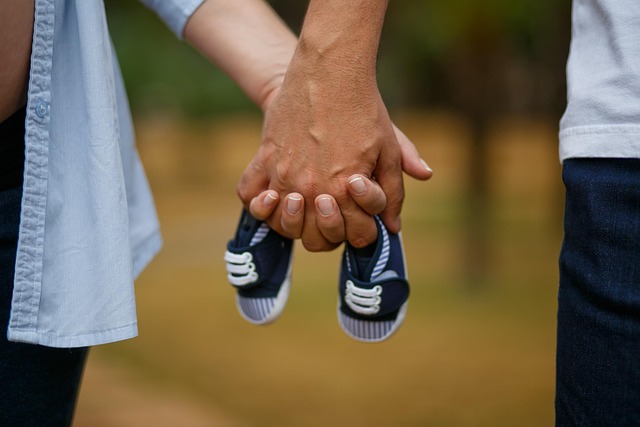Navigating the world of fashion can be a daunting experience, especially for plus-size women. I remember setting out on a quest for the perfect formal dress, accompanied by three friends for moral support. We left our kids at home, eager for a fun evening of shopping. But after two hours of searching store after store, my hopes began to fade.
Despite my friends’ encouragement, our efforts yielded little more than a gaudy black sequined dress that felt more like a costume from an old TV show than anything I’d want to wear. Yet, with no alternatives in sight, I reluctantly purchased it for over $200, knowing I’d only wear it once. Frustratingly, I’m a size 14/16, and the situation was disheartening, especially when studies reveal that the average American woman wears a size 16. According to research highlighted by Today, “what we find on the racks is getting smaller and smaller each season, leaving us with unrealistic, tiny options.”
This struggle isn’t new for my companions, who have all faced their own challenges in the realm of plus-size fashion. They understand the harsh realities of shopping for larger sizes—often a demeaning, expensive, and exploitative experience. For anyone above a size 14, finding stylish options can feel like an impossible task.
After gaining 50 pounds due to a medication, I decided to abandon brick-and-mortar stores altogether and turned to online shopping for pre-owned designer items. The frustration grew when I discovered that even stores like Target relegated me to the dreaded XXL category, which often felt like a mere size up from regular clothing, rather than being designed for a plus-size body. Their Ava & Viv line, while a step in the right direction, still fell short, as it primarily offered sizes up to 3X, with a significant drop-off for 4X and above.
Voices from the Community
Take Mia, a 31-year-old with a fabulous spirit and a body to match, who unfortunately finds herself largely ignored by the fashion industry. She stated, “It’s easier to stick to a uniform of basic pieces because most stores just apply the same measurements to larger sizes without considering how a curvier body fits.” She adds that it’s frustrating when brands fail to recognize that a curvy silhouette requires different cuts and styles.
Lauren, age 35, echoes this sentiment and notes progress in some brands, like Torrid, which now employs multiple fit models for each size. However, the financial burden of plus-size clothing remains a significant issue. “Plus-size clothes are often overpriced,” Mia emphasizes. “It’s not just about additional fabric; it feels like price gouging.”
Even when shopping online for secondhand items, I noticed that plus-size clothing frequently came at a premium compared to regular sizes. It’s as if sellers assume that plus-size women are so desperate to feel good in their clothes that they can charge whatever they want. As Lauren pointed out, “When I find something that fits, it usually looks like a tent, and that’s not how I want to present myself.”
While there are options available—like Lane Bryant, which offers sizes up to 28—many of these choices are limited to online shopping. Local stores often carry few styles, leading to a frustrating lack of variety and fit. Last year, Lauren’s husband struggled to find her birthday clothes, only managing to locate a pair of leggings that fit poorly. Sportswear is particularly hard to come by, and many women express the need to order online, where the fit can be hit or miss.
The underlying truth is that despite the increasing availability of plus-size clothing, many women still feel overlooked. Mia shared her frustration: “It’s disheartening to see that even as options expand, those of us above a size 3X are often left without choices.”
Shopping for clothes can become a demoralizing experience, often leading to feelings of inadequacy. “It’s a nightmare,” Lauren admitted. “I feel like my body issues are magnified during shopping trips. I know I’m ‘normal,’ but the fashion industry seems to disagree.”
As a woman who wears an XL, I can relate. Walking into stores with racks of stylish clothing that don’t cater to my size can trigger profound feelings of shame. It’s a painful reminder that I’m somehow deemed unworthy of fashionable options.
A Call for Change
To combat this, Susan Dunn, a lead researcher from the International Journal of Fashion Design, advocates for a shift in industry standards. By recognizing that a size 16 is average, she hopes to encourage both consumers and manufacturers to embrace inclusivity in fashion. “Women of all sizes deserve clothing that is stylish, available, and fitting,” she asserts.
So why should women like Mia, Lauren, and others be relegated to the sidelines? They are vibrant, beautiful individuals who deserve to wear clothing that celebrates their curves. As we continue to demand change, it’s vital that the fashion industry realizes we are here to stay, with purchasing power and a desire for stylish options.
Let’s hope that brands start to take note and create clothing that truly represents all women. After all, we want to feel good about ourselves when we get dressed! For more insights on fertility and family planning, check out our post on fertility boosters here, and if you’re looking for information on insemination options, this resource on IUI success is invaluable.
Summary
The fashion industry continues to overlook plus-size women, leaving many feeling frustrated, inadequately represented, and underserved. As the average size creeps up, it’s essential for brands to adapt and provide fashionable, flattering options that cater to all body types. Women like Mia and Lauren deserve to feel beautiful and confident in their clothing, and it’s time the industry recognizes their purchasing power and unique needs.
